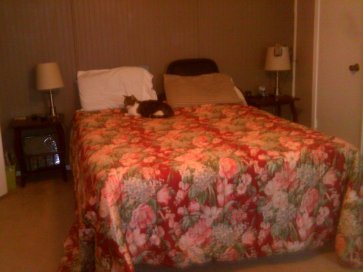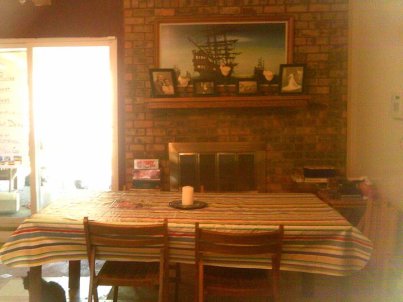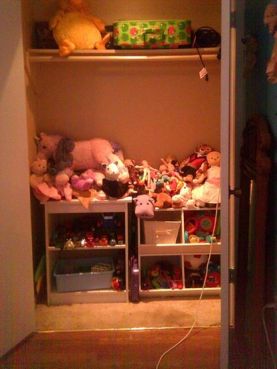When I was young my favorite story was Cinderella. I had a step mother (not quite as evil as the one in the story) who made me help with the housework. In reality, I didn’t have much responsibility, dishes after dinner, bathrooms once a week, and keeping my room picked up, but to me it was slavery. In my hours of toil, I’d put my overactive imagination to work and pretend I was the lead housekeeper for the queen’s summer house which she was about to return to and everything had to be perfect. I’d make my closet into a little hideaway cabin where I kept all my most important things hidden from the evil queen. I’d turn my toy box into a treasure chest which I would cover in a table cloth and arrange all my stuffed animals on top of so the pirate couldn’t steal my treasures.
It certainly made cleaning an adventure. After I wrote the original story that inspired the characters for Surviving the Stillness, I started having dreams of a Catholic orphanage. As a teenager, my pretending shifted to daydreaming. I began to think about this place I kept dreaming of. In fact, the scene in my book where Abigail is washing dishes next to Sister Ann and staring out the window came directly from one such day my freshman year of high school when I was washing dishes and staring out the window next to me wishing I was at St. Catherine’s. That’s also where the boy running off in the distance (the alley way in real life) came from.
I admit I still use my imagination to get through my housework. I’ll pretend I’m cleaning the bathroom of the house Abigail grew up in, preparing for entertaining those uppity snobs who are going to pick over every bit of dust and thing out of place. Or I’ll hand wash my floors and meditate on the word of God like the sisters of St. Catherine’s. But nowadays as I write the next book in the series, I’ve realized that cleaning is a tool I use to deepen my characters and develop my storyline.
How?
I use the time to get to know my characters.
Just like in real life, it is easier to get to know someone if you are both busy doing something else. I got to know Sister Ann over washing dishes. Dr. Mason I’m getting to know over meticulous tasks like organizing my bathroom drawers, dusting books, or turning all the labels forward in the pantry. There is something about the unique strengths each task requires that make characters come to life. Sister Ann’s joy comes through in watching the debris of life be scrubbed away and a sparkling clean dish come out of the water.” Nothing is beyond the hand of God to make new.” I hear her say. Dr. Mason’s methodical pace and thoughtful consideration over every decision comes through as I’m looking at expiration dates on the medicines in the bathroom cabinet and deciding what to keep and toss. I’m getting to know Samuel’s best friend Simon through having my daughter tag along on the chores. I watch my four year old so eager to help and I see Simon’s desire to get Samuel to approve of him and value his contributions.
 Sometimes I go into the chore with someone in mind, sometimes the chore will choose the character. Surprisingly, making the beds with hospital corners helped me realize how much care Sister Ernestine puts into her work in the infirmary. Keeping things calm, clean, and quiet, much like the morning work of making the beds tends to be. Dealing with a messy desk helped me realize how much work it takes to maintain my house much less a whole orphanage like Mother Margaret. Which ever way, I find if I go into a chore with the intent to find a character there, one never fails to appear to lighten the work load with a little conversation.
Sometimes I go into the chore with someone in mind, sometimes the chore will choose the character. Surprisingly, making the beds with hospital corners helped me realize how much care Sister Ernestine puts into her work in the infirmary. Keeping things calm, clean, and quiet, much like the morning work of making the beds tends to be. Dealing with a messy desk helped me realize how much work it takes to maintain my house much less a whole orphanage like Mother Margaret. Which ever way, I find if I go into a chore with the intent to find a character there, one never fails to appear to lighten the work load with a little conversation.
I use the time to explore settings.
In historical fiction, building a believable world takes research and lots of planning. Not only do you have to build a place readers believe can exist but it has to be historically accurate. For instance, in order for anyone in Bear Valley to have indoor plumbing they would have to have a septic system or a drainage that led downhill from their house. There wouldn’t have been city water yet for a town so small and it certainly wouldn’t go miles outside of town to the foothills or the orphanage. Logistics are a rats nest that have to be untangled one layer at a time.
Once you’ve got the details like electricity and water figured out then you have to start building how the environment works for the characters. That’s where cleaning comes in. Sometimes while cleaning, I will work out logistics in my brain. How does Dr. Mason use his cabin to work as a clinic when someone arrives on his doorstep? Well first, if they are coming to him, then it is going to be an emergency.
Have you noticed in your doctor’s office they never have to step away from the examination table?
 Emergencies require everything to be at hand. Back then, kitchen tables were the hub of activity. It was also the only flat elevated surface in a house. Surgery would be too messy to be done in a bed (not to mention all the germs that are harbored in mattress bedding). When I realized this I thought about how I set my own dining room table. I realized I had to go to three separate places in my house for linens, tableware, and serving-ware. So I bought a buffet where all of those could be stored only a step away from the table. It made life so much easier. So I made sure to put a cabinet two steps away from the table in Dr. Mason’s cabin where linens, suture kits, and medicine could be at hand.
Emergencies require everything to be at hand. Back then, kitchen tables were the hub of activity. It was also the only flat elevated surface in a house. Surgery would be too messy to be done in a bed (not to mention all the germs that are harbored in mattress bedding). When I realized this I thought about how I set my own dining room table. I realized I had to go to three separate places in my house for linens, tableware, and serving-ware. So I bought a buffet where all of those could be stored only a step away from the table. It made life so much easier. So I made sure to put a cabinet two steps away from the table in Dr. Mason’s cabin where linens, suture kits, and medicine could be at hand.
I also realized how much time it took to clear the table after a meal. Even for just Matthew and his pa to eat there would be several dishes there and a mess to wipe up before the table could be used. Thankfully, with Matthew preferring to eat at St. Catherine’s and Dr. Mason’s personal habits of only eating one larger meal in the afternoon and the rest for dinner means no formal setting of the table. I also realized that for Dr. Mason the table was probably seen more as an operating table than a place to eat. I would venture to guess that when Matthew isn’t home he eats in the kitchen or his study. I learned all of this over many days of clearing the table and trying to become as efficient and practical as Dr. Mason is.
Sometimes while cleaning, a solution to a logistical problem will present itself. A few weeks back, I was cleaning out my entry closet and remembered how my grandmother’s house had a small window in the closets to vent heat from the kitchen through the bedrooms before central air and heat was invented. That solved a problem I was having in the next book in the Seasons of Healing Series. Likewise, when I plan the furniture placement in the book, many have come from rearranging my own furniture. After numerous injuries to my toddler who seemed oblivious to the corners of the coffee table, I removed it from our living room. The odd distance its removal caused, provided the perfect picture of what I wanted for St. Catherine’s parlor. You never know when that odd nook or difficult access to the attic is going to inspire the setting of your story or solve that logistical nightmare in your story.
I use the time to explore emotions
When I need to get into a character’s head, there is nothing like chores to give me that time to explore their emotional state. Scouring pans or the bathtub are great ways to get into an angry or frustrated mindset. That spot that just won’t come clean becomes the antagonist and suddenly you can work out what dialogue and actions are going to get your character through the scene. Cleaning ceiling fans can build up that ache in a scene of perseverance. Scrubbing toilets or floors will humble you or make you resent the dog who tracked mud across freshly mopped floors. Every emotion can be explored while cleaning. I’ve found disgust in the refrigerator, angst in the permanent marker on my table, and love in dusting the framed pictures of my loved ones. Then I turn it to the page and pour it out constructively. The writing becomes cathartic. Likewise when I’m in a scene and need to get out of the mindset, I find cleaning a good go between before jumping back into family life.
 Cleaning also is a great way to figure out which emotion the character should be feeling in a scene. Working outdoors in the cold of winter reminds you how quickly you’d want to get the chores done in winter. This is not the time to dawdle or daydream. Just as the heat of summer makes you want to find some shade to relax in or a watering hole to cool off in. You don’t want to work when it’s hot. While cleaning I often have time to observe my children, too. The angst of cabin fever when everyone was stuck indoors at St. Catherine’s came out of a rainy week in spring with my two girls running amok with no where to let out their energy. The fear of storms Abigail experiences, likewise came from my daughters’ fearful responses to the thunderstorms we have here in Texas. Doing yard work and maintenance on the house, made me realize that the sisters at St. Catherine’s were responsible for all that work too. We often think of the sisters as passively praying their days away, but in reality the building, grounds, care and education of the orphans, provided never ending work for them to be busy too. They took all that work on as the work of the Lord from the littlest chore to the biggest.
Cleaning also is a great way to figure out which emotion the character should be feeling in a scene. Working outdoors in the cold of winter reminds you how quickly you’d want to get the chores done in winter. This is not the time to dawdle or daydream. Just as the heat of summer makes you want to find some shade to relax in or a watering hole to cool off in. You don’t want to work when it’s hot. While cleaning I often have time to observe my children, too. The angst of cabin fever when everyone was stuck indoors at St. Catherine’s came out of a rainy week in spring with my two girls running amok with no where to let out their energy. The fear of storms Abigail experiences, likewise came from my daughters’ fearful responses to the thunderstorms we have here in Texas. Doing yard work and maintenance on the house, made me realize that the sisters at St. Catherine’s were responsible for all that work too. We often think of the sisters as passively praying their days away, but in reality the building, grounds, care and education of the orphans, provided never ending work for them to be busy too. They took all that work on as the work of the Lord from the littlest chore to the biggest.
Like Cinderella, I’ve found a way to make cleaning more than a boring chore. I’ve turned those hours of work into hours of productive time to work through my stories and to get to know my characters. I may not have a magic wand to turn my dust bunnies into helper elves, but with a wave of my writing wand, I can eradicate plot bunnies and dust bunnies at the same time.
I love to hear from my readers. So what do think about while cleaning? If you are a writer, what are some activities you do while tackling your stories?

Getting to know my characters is the last thing that comes to mind when I’m cleaning or anything I think of as boring.
I have ideas for stories, however, where I can implement this technique. It’s based on my experiences working retail, which is about as remedial as it gets. Thanks for sharing.
LikeLiked by 1 person
I have a love/hate relationship with cleaning. I’m a bit like my character Dr. Mason in that when I do something, I want it done to perfection or at least the best of my ability. Having small children that rarely happens. I’m lucky if I finish a task before little hands are undoing my work. I think readers will see how Abigail softens, Dr. Mason’s edges and perfectionism over the course of the series.
LikeLiked by 1 person
I have definitely worked out a lot of plot and dialogue issues while doing dishes. I can’t say I’ve incorporated many other chores into my creativity – but perhaps a I should. It would give me some motivation. My husband’s summer project of building us a patio and the little help I gave helped me create a character who runs his own hardscaping business. It’s all there in the details!
LikeLiked by 1 person
That’s neat Carolyn. Some of my characters have traits and quirks of family, friends, and neighbors after I’ve seen them do something a certain way. It is so true we have to be studiers of people to be great writers.
LikeLike
What good motivation for doing the housework! I must say my house suffers when I’m writing so I will try this. I tend to think about my characters when I’m walking the dog.
LikeLiked by 1 person
It does add a neat twist to housework. I’ve been known to argue with my characters over how things “should be done”. But it has led me to realize that as a writer, if I want my characters to be true to themselves, HOW they do things is as important as WHY. Hope this technique leads you to some awesome insights about your characters, too.
LikeLike
I’ve never thought specifically about getting to know my characters while tackling housework, but stepping away from the computer and shifting my attention to something else will often lead to an epiphany for my story. Applying a literal or figurative parallel is an interesting approach. I’ll have to try it! 🙂
LikeLiked by 1 person
Let me know how it works for you. I often ask God if I’m the only person who thinks and works this way. No better way to find out than to have my readers try it.
LikeLiked by 1 person